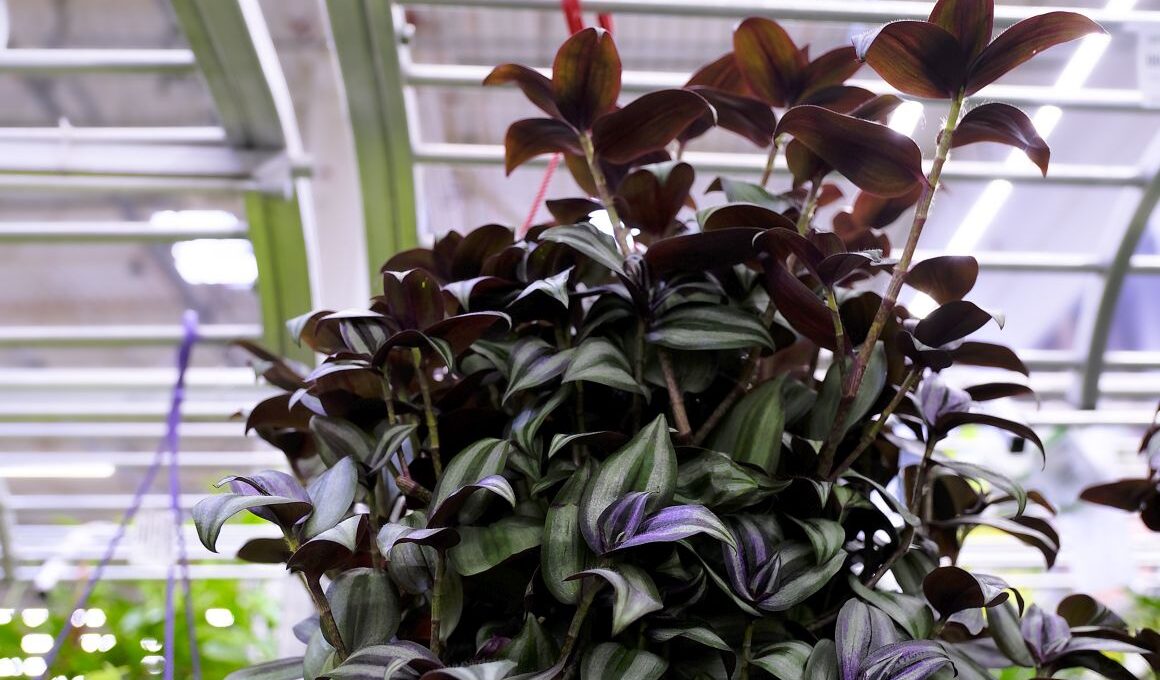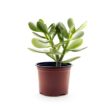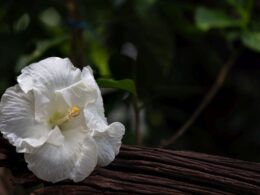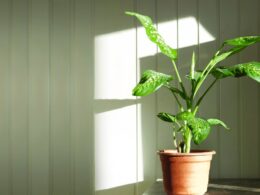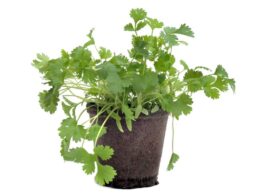What Is a Wandering Jew Plant? Names, Origin, and Characteristics
Before we tell you all about wandering Jew plant care, let’s introduce it. The wandering Jew (Tradescantia zebrina) plant is a tropical perennial plant that’s native to Mexico and Central America. It gets its name from its wandering, vining habit. Other common names include:
- (silver) inch plant;
- cockroach grass;
- striped trad;
- striped wandering creeper;
- wandering zebrina;
- zebra plant.
The leaves are glossy and dark green, with purple or burgundy stripes running along the length of the leaf. The stems are also purple or burgundy. The plant produces small, three-petaled white flowers. It’s a fast-growing plant that can reach up to 12 inches in length.
Other popular species of spiderwort are Tradescantia fluminensis and Tradescantia pallida (Purple Heart). They may have slightly different care requirements, although they’ve all been known under the name ‘wandering Jew’.
Wandering Jew Plant Care – Soil and Fertilization Needs
This plant isn’t picky when it comes to soil type, as long as it drains well. A potting mix with perlite or vermiculite added to it will work well. You may want to choose a potting soil with a high level of organic matter, or make your own by mixing:
- coarse sand or perlite;
- humus or peat;
- garden soil;
- a handful of organic compost;
- a light dusting of lime.
The wandering Jew plant doesn’t need a lot of fertilizer. Once every two weeks during the growing season will suffice. Use a dilute solution of an all-purpose fertilizer and apply it when you water the plant. It should be diluted to 50% strength to avoid burning the foliage.
Wandering Jew Plant Care – Watering Needs
While watering is an important part of wandering Jew plant care, it doesn’t need a lot. Keep the soil moist but not wet, allowing it to dry out slightly between waterings to avoid root rot. In general, the plant should be watered about once a week, though this may vary depending on the climate and the time of year.
During the winter, the plant will need less water as it goes into a semi-dormant state. The important thing is to not let the soil get too dry, as this can cause the leaves to drop off. With a little care, the wandering Jew plant can thrive for many years.
Wandering Jew Plant Care – Light Needs
This plant does best in bright, indirect light. Avoid putting it in direct sunlight, or it may scorch its leaves. If the leaves start to lose their color or develop bleached patches, that’s a sign that the plant is getting too little light. Try moving it to an east- or west-facing window where it can soak up natural light.
Wandering Jew Plant Care – Temperature and Humidity Needs
When it comes to temperature, the wandering Jew plant is fairly tolerant, but it does prefer warm, humid environments. It will do well indoors in most homes, or even outdoors in some climates, as long as the temperature remains between 50 and 80 degrees Fahrenheit.
However, if the air is too dry, the leaves may begin to brown and drop off. For this reason, it’s important to keep the wandering Jew plant in an area with high humidity levels. A kitchen is usually a good choice.
Do You Need to Prune Wandering Jew Plants?
Normally, wandering Jew plant care doesn’t involve pruning. But if you want to keep your plant looking its best, you can trim it back in late winter or early spring. This will encourage new growth and help keep the plant from getting too leggy.
How to Propagate Wandering Jew Plants?
The wandering Jew plant is very easy to propagate. Propagation is usually done by taking stem cuttings in spring or summer. Just take a cutting that’s about four inches long, remove the bottom leaves, and put it in a pot of moist soil. The cutting should start to grow roots within a few weeks. Once it does, you can move it to its own pot.
How Often Should You Repot Wandering Jew Plants?
You should repot your wandering Jew plant every two or three years, or whenever it starts to look cramped in its pot. Just choose a pot that’s one size larger and has drainage holes. Be careful not to damage the roots when you’re repotting, and water the plant well after repotting.
Common Problems with Wandering Jew Plants
One of the most common problems with wandering Jew plants is browning or yellowing leaves. This can be caused by too much sunlight, too little humidity, or a lack of fertilizer. If the leaves are starting to turn brown, try moving the plant to a shadier spot and increasing humidity. You may also need to fertilize more often.
Another common problem is mealybugs. These pests will suck the sap out of the plant, causing the leaves to turn yellow and eventually drop off. If you see mealybugs on your plant, you can remove them with a cotton swab dipped in rubbing alcohol. You may also need to treat the plant with an insecticide.
Wandering Jew Plant Toxicity
The wandering Jew plant isn’t considered toxic to humans or animals. However, its sap can cause skin irritation or dermatitis in some people and pets, so it’s best to handle it with gloves. If you have pets, make sure they can’t reach the plant.
Prepared to Care for a Wandering Jew Plant?
With a little care, your wandering Jew plant will thrive for many years. Just remember to water it regularly, keep it in a warm, humid environment, and fertilize it every month or so. If you do all that, you should have a healthy plant that’s easy to care for.
Do you have any more wandering Jew plant care tips? Share them in the comments below!





